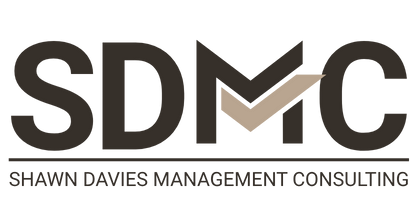White Paper: Building Executive Teams Focused on Results, Not Politics
Executive Summary
High-performing executive teams are built on trust, clarity, and an unrelenting and disciplined focus on results. In contrast, organizations bogged down with internal politics suffer from slow execution, poor morale, silos and fragmented accountability. As CEO, your responsibility is to build an environment where collaboration, ownership, and measurable impact replace politics. This white paper outlines a framework for creating and sustaining results-driven leadership teams that thrive on trust and continuity of purpose.
I. Eliminate Politics by Focussing Leadership on Results
Politics thrive in the absence of clarity. To suppress political behavior and reward performance:
Align on Strategy.
Define What Success Looks Like: Establish a focused set of goals and cascade KPIs to every member of the leadership team.
Link Performance to Advancement: Make it clear that growth opportunities come from results—not relationships or tenure.
Lead with Transparency: Regularly publish team-level performance dashboards and outcome-based scorecards.
Address Behavior Early: When maneuvering surfaces, address it directly and reset expectations.
II. Build Trust Through Collaboration and Shared Accountability
People support what they help create. Alignment comes from inclusive planning, not top-down mandates:
Engage Executives in Strategy Formation: Allow leaders to help shape the vision, not just execute it.
Collaborative Goal Setting: Co-develop objectives and success metrics with team input to ensure buy-in and commitment.
Celebrate the wins. Team and Individual.
Model Vulnerability: Admit mistakes, ask for feedback. Be prepared to be moved off your position.
III. Create an environment of Trust and Accountability
Trust is not a just a concept. The greatest gift you can give and receive is honest feedback. Build a team that is well intentioned and trusts that peers are well intentioned.
Weekly Leadership Cadence: Use operating reviews and decision forums to create consistency and eliminate ambiguity.
Feedback Culture: Make feedback a regular, constructive, and 360-degree process.
Decision Discipline: Clarify how decisions are made, who makes them, and how they're communicated.
IV. Enforce Team Behavioral Expectations
Set expectations on values and performance criteria. As CEO, you must:
Define and Document Team Expectations: Establish how leaders behave under pressure, in disagreement, and in execution.
Lead by Example: Model those behaviors daily—humility, clarity, directness, and follow-through.
Make the Hard Calls: Remove those who cannot or will not conform to the standard.
V. Scale the Model Through Leadership Layers
A high-functioning executive team sets the tone for the entire organization. To scale this impact:
Replicate the executive team rhythm at every layer of leadership.
Develop Internal Talent: Promote leaders who exemplify the desired mindset, performance, accountability, execution and behaviors.
Reinforce through Recognition: Publicly acknowledge leaders who drive results and elevate team performance.
Conclusion
Executive teams that are trusted, aligned, and focused on results can unlock extraordinary enterprise value. CEOs must be intentional about removing politics, promoting co-creation, and modeling behavior. Trust is earned, results are non-negotiable, and culture is a daily choice. Build a team that reflects these truths, and the organization will follow.
About the Author
Shawn Davies is a seasoned CEO with a track record of leading successful turnarounds, integrations, and growth-stage transformations. He has built high-performing leadership teams across industries by instilling trust, clarity, and accountability at every level. His leadership philosophy centers on results and execution, not politics, and co-creation as the foundation for lasting commitment.
